Any Hollywood film producer needing a blockbuster script should look no further than New South Wales and the aerial culling of brumbies. It is a highly polarised issue and has been for many years. After all, the concern about culling brumbies is not matched by concerns to kill other feral animals or pests, such as deer, pigs, rabbits, foxes and cats.
In one corner are the government, bureaucrats, academics, and environmental activist groups such as the Invasive Species Council (ISC) and Reclaim Kosci, collectively known as the brumby haters.
In the other corner are the brumby lovers – local landholders, animal and horse supporters, and many park users. Coming out of these disparate groups are not only accusations of lying and deception directed at the government and bureaucrats and questions over the integrity of scientific studies but, most appealingly for a movie producer, bitter animosity and infighting between the various brumby lover groups.
According to the brumby haters, NPWS must eliminate mobs of brumbies because they are:
“ravaging the park, trampling its delicate ecosystems, fouling its crystal streams and destroying the habitats of its native wildlife”.
The main arguments supporting the brumby’s cause are a strong-held belief about their cultural heritage value associated with the high country and a dying way of life most linked to one of Australia’s most iconic brands. So iconic and woven into the Australian cultural fabric is the brumby, a global audience of millions watching the opening of the Sydney Olympic Games in September 2000 were treated to an Aussie horse tradition. They witnessed Steve Jeffreys gallop into the stadium on a stock horse, cracking a whip with The Man from Snowy River theme music filling the stadium.
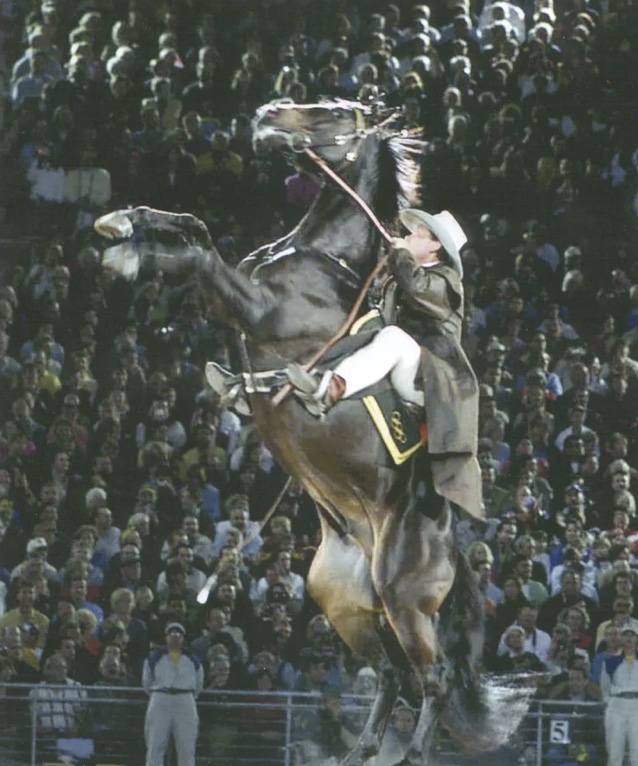
Many families associated with the brumby-lovers have lived in the mountains for generations since the 1800s. The mountains were their backyards, and they have a deep-rooted land management and historical association with what is now the Kosciuszko National Park (KNP).
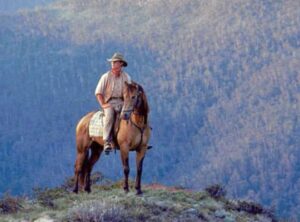
Scene from Man From Snowy River. Source National Film and Archives.
They have managed the brumbies in the high country for many years, and unlike visitors who experience the area once or twice a year, the alpine country and mountains were part of their home and way of life.
Self-serving academics, politicians, and bureaucrats underappreciate their knowledge of the landscape, treat them with contempt and focus solely on erasing their cultural identity in the mountains.
A little-known fact is that when the government forced the mountain cattlemen and their families from their leases, they wanted to know who would manage the brumbies. The agency responsible for managing KNP, the New South Wales National Parks and Wildlife Service (NPWS), assured them that the brumbies would have negligible impacts and didn’t need management.
However, NPWS struggled to manage the wild horses in the early days. When a dozen horses roamed in the Rams Head area near Thredbo in 2000, local horse riders quietly trapped them passively, showing rangers how to do it at no expense.
No one has argued that managers should keep the true alpine and other similar sensitive areas free of wild horses. Yet, academics and environmental groups use propaganda and lies to portray a falsehood that the brumbies are destroying the sensitive alpine regions, even though it is rare to find them in those higher altitudes above 1,800 metres above sea level.
It is common public knowledge that the culture at the local NPWS office has always been antagonistic towards the brumby lovers, displaying an attitude like, “It’s our park, and we’ll do as we see fit”. Despite providing a front of caring for community attitudes, they privately scorn any public interference in their management. Many members of the public referred to this reality during the 2023-24 New South Wales inquiry into the proposed aerial shooting of brumbies in KNP.
There are also strong rumours in the local community that NPWS staff have been threatened with dismissal if they engage on social media, or talk to anyone outside of NPWS about their activities, including family members. If true, it raises serious questions whether managers at NPWS are following the government’s own rules about code of conduct.
The nation’s premier animal welfare group, the RSPCA, is caught up in the mess and forced to pick a side. Recently, its New South Wales CEO Steve Coleman told the press about the aerial culling of horses:
“It is the practical, brutal reality. It’s not nice or palatable, but it is the truth.”
The brumby lovers are incensed. RSPCA’s history dates to 1871, when the community formed Australia’s first group to prevent animal cruelty after a public meeting about the ill-treatment of horses!
The brumby lovers believe that because the RSPCA receives significant funding from the New South Wales government, it has an apparent conflict of interest and cannot be considered independent in assessing whether NPWS is humanely culling the brumbies.
There are irresistible and dramatic features for a movie script whenever there is government-sanctioned killing of brumbies – alleged death threats, vilification and slander on social media sites, nasty emails, and a severed bloody horse head left at the government agency’s office. It is a film producer’s dream scenario, guaranteed to capture huge audiences worldwide.
Except it is a genuine, authentic, bitter and real battle.
On one side, the brumby haters have an annoying tendency to arrogantly mock the resistance to culling as some kind of extremist “far right” endeavour. How dare the far rednecks and unwashed have the audacity to stand up for wild horses?
They even commonly categorise anyone questioning the studies on brumby damage with childish terms such as “anti-vaxxers”, “conspiracy theorists”, “Christian fundamentalist nut jobs” or the biggest insult, “Trump supporters”.
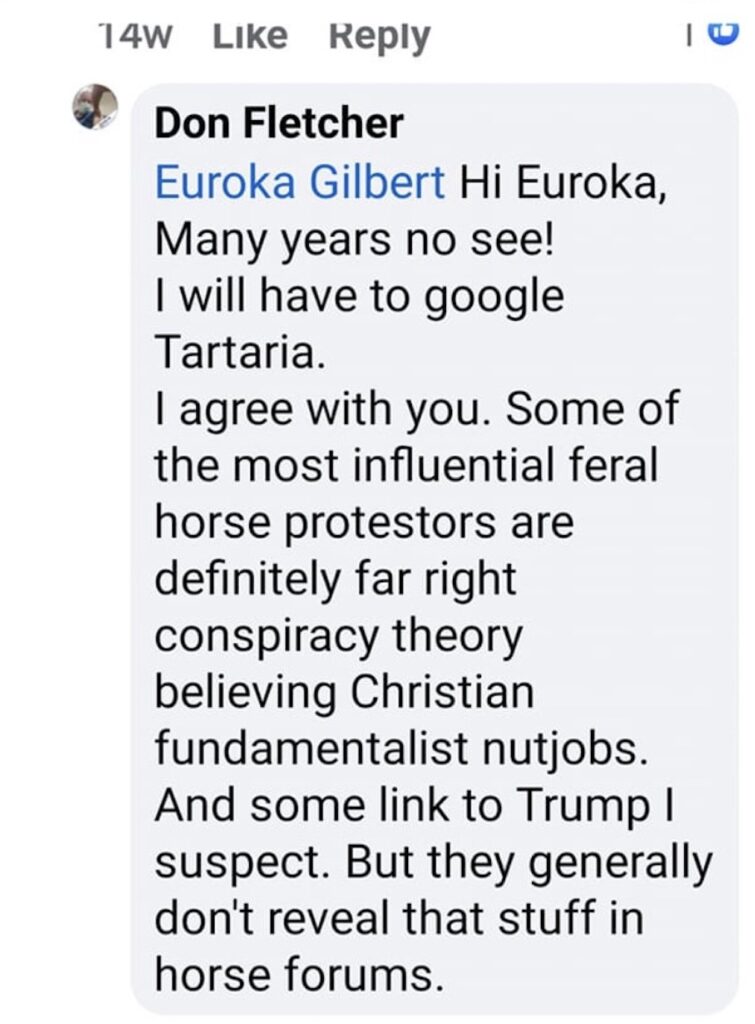
The brumby lovers, on the other hand, have profoundly held and passionate views. Apparently, they resort to constant death threats, except most accusations are retracted when challenged. Anthony Sharwood’s polemic The Brumby Wars: the battle for the soul of Australia pushed that narrative throughout his book.
Social media platforms discussing this fight have become a miasmic cesspit of claims and counterclaims. The brumby haters resort to condescending put-downs lacking any substance, while the brumby lovers use a lot of emotive arguments and imagery.
Back in 2016, when the previous wild horse management plan was being prepared, the NPWS were trapping and supposed to be rehoming brumbies. However, they wanted to implement the much quicker and cheaper method of aerial culling, but they couldn’t, as they killed that option under sunny skies in the Northern Tablelands of New South Wales over a decade earlier.
Everything always comes back to Guy Fawkes River National Park. It is the most damaging and embarrassing land management debacle by a government department in the nation’s history.
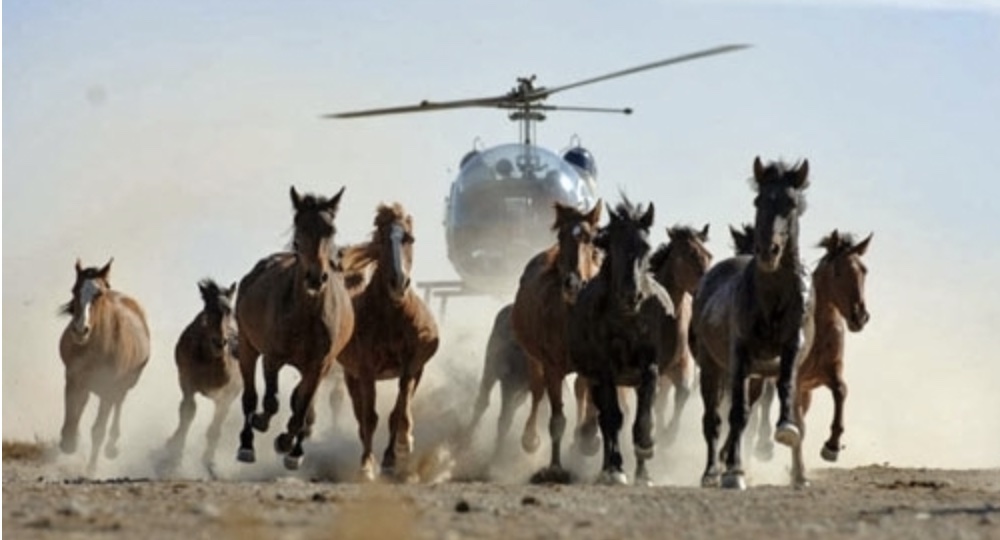
When the shit hit the fan – the Guy Fawkes debacle
It was just a month after the euphoria and celebration of our strong brumby heritage was put on display at the Sydney Olympic Games. On a crisp morning in the northern NSW Tablelands, the sound of helicopter blades shattered the peaceful serenity in the forests. Below, a herd of brumbies galloped wildly, their eyes wide with fear.
While the targeted animals on the ground were intelligent, they were no match for the bullets about to rain on them. Many had already moved on, but it was only a matter of time before they would be in the crosshairs of the high-calibre machine gun’s periscope.
As the helicopter ran a mob of horses up a hill and corralled them into a large group, shooters let rip. One horse was shot in the front leg twice, the back leg and then the body; another was shot in the gut five times, once in the neck and once in the head; another had two shots to the back, two in the gut and three in the jaw.
The jacketed military bullets, not soft-pointed, passed straight through the horses when they hit.
Between 22-24 October 2000, the NPWS reported three professional contract shooters culled 617 horses firing from helicopters using semi-automatic firearms and over 3,000 bullets.
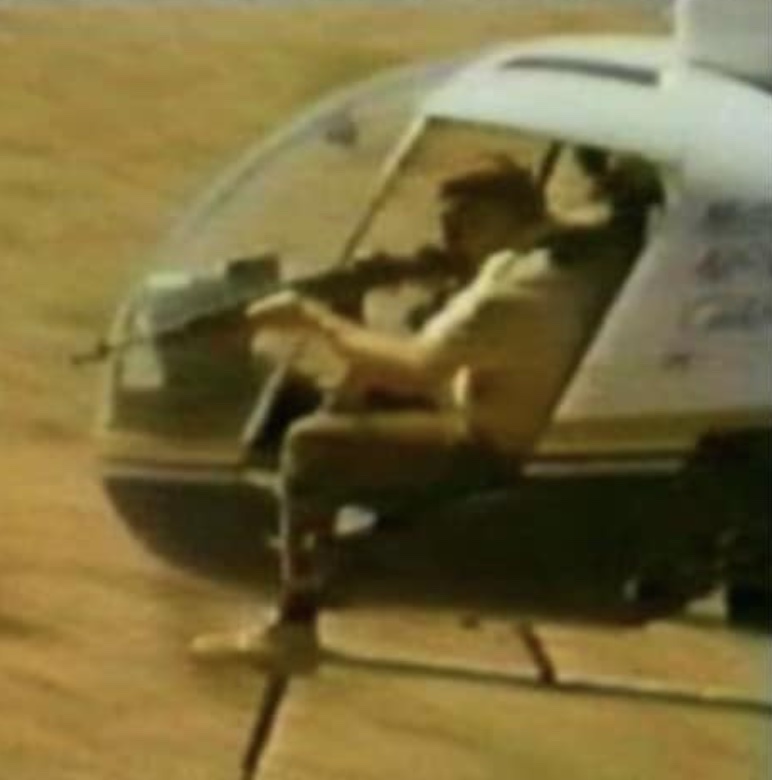
The bloody incident may have started in the wild backblocks on the Northern Tablelands escarpment, but it didn’t take long to spill into the front pages of the Sydney newspapers and the television screens across millions of lounge-rooms.
Local farmer Greg Everingham rode his horse into the park to see what had happened. He took photos of those bullet-riddled horses and appeared on the national news on 30 October 2000. He told reporters:
“The manner in which these horses were killed was absolutely barbaric. It was damned murder”.
He added that he also discovered surviving bullet-riddled horses staggering around the park.
Other locals found badly mutilated horse carcasses scattered across the park. Some horses were riddled with up to 25 bullets, adding a voice of protest.
All hell was about to break loose.
In Parliament, Labor’s Minister for Environment, Bob Debus, was pressured into conducting a full and independent inquiry. He appointed Dr Tony English from the University of Sydney to head of the inquiry.
The Australian Veterinarian Association (AVA) made it clear they were appalled by the “brutal slaughter of 600 horses”. These words inflamed the situation, and the gloves came off, which led to a big stoush played out in the public arena between AVA and NPWS. AVA was incensed that the minister and NPWS inferred they were directly involved in the planning of the cull. Vice-President Dr Garth McGilvray told the media:
“The AVA, which represents the majority of veterinarians in Australia, is incensed that the NPWS and its Minister have sought – retrospectively – to infer we were directly involved in this cull or that we had somehow approved it. We did neither”.
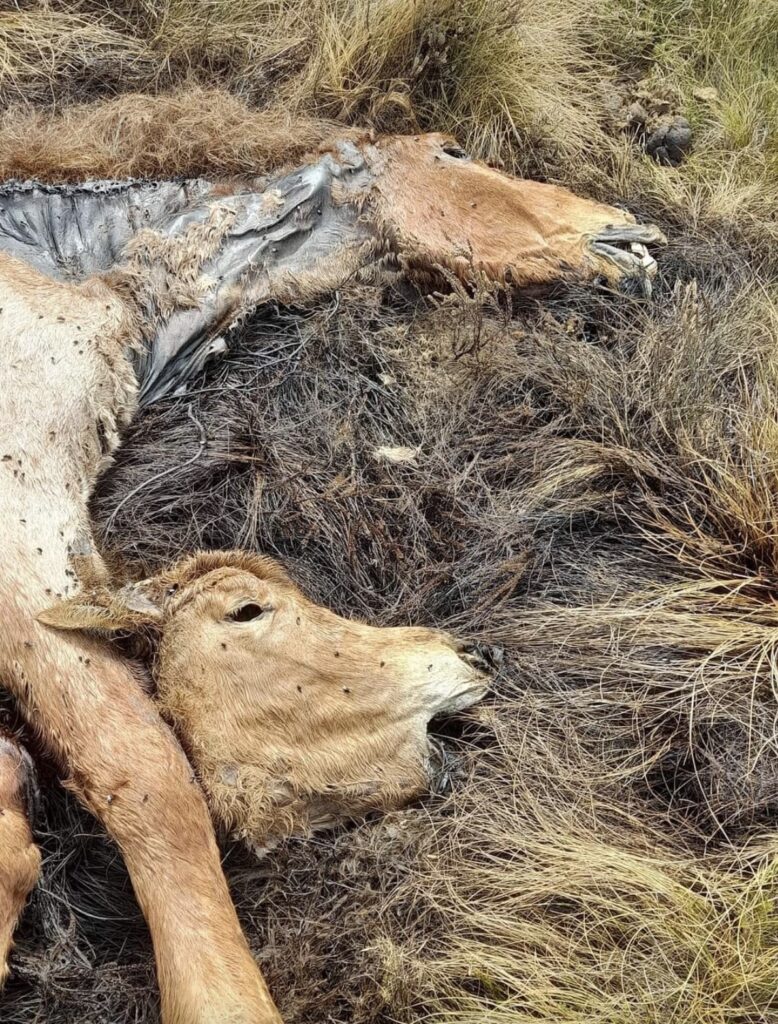
Two weeks later, an RSPCA inspector found one mare with two high-calibre bullet wounds in the shoulder and still alive. It had to be euthanised. The RSPCA began an investigation into allegations of cruelty to animals by NPWS for not following the protocol of locating all shot horses.
Meanwhile, NPWS officers accompanied Dr English to inspect Guy Fawkes River National Park. They showed English 39 horses out of the 617 killed. There were allegations that NPWS showed him evidence they wanted him to see horses humanely killed, despite locals having photos and videos of at least 67 horses not slaughtered humanely.
On 16 November 2000, Debus released the interim report, which concluded the operation “was planned and carried out in a professional manner by the NPWS”. In the burly maelstrom of political power plays, that conclusion wasn’t unexpected. After all, one would hardly expect a minister to publicly throw his department under the bus as it would reflect poorly on himself and his government and most likely lead to his resignation. However, he conceded that his department needed an overhaul, and that Dr English would review all the procedures and protocols governing NPWS operations for culling feral animals.
Debus also announced the aerial culling of horses had been permanently banned in all New South Wales national parks, telling the media it was:
“In keeping with community expectations. A better way must be found to control these feral animals … I have listened to the community on this issue. The close bonds between humans and horses and their place in the history of our country mean that this sort of operation is unacceptable to a great many people”.
In December 2000, the RSPCA took NPWS to court over 12 charges under the Prevention of Cruelty to Animals Act, 1979. They alleged there were various acts of cruelty and aggravated cruelty to 226 horses found within Guy Fawkes River National Park.
Following a drawn-out case in the NSW Local Court, NPWS escaped conviction on the animal cruelty charges in July 2002 when 11 charges were dropped in exchange for NPWS pleading guilty to a new charge that at least one horse did suffer cruelty. Magistrate Graham Hanson recorded no conviction, but he ordered NPWS to pay RSCPA’s legal costs of $50,000.
While stressing the judge’s conclusion that his department carried out the operation professionally and humanely, Director-General Brian Gilligan accepted evidence that at least one and possibly four horses “may have unintentionally suffered”. He also admitted that the aerial culling of horses was unacceptable to a significant portion of the community. He stressed that NPWS learnt a lot from the exercise; they wouldn’t use aerial culling again and would do things differently.
Former MP for the Eden-Monaro region, Peter Cochran, summed up NPWS’s trashed reputation:
“There is certainly no excuse for what they did; it was wholesale slaughter, and it destroyed for all time the reputation of the NPWS as responsible managers of national parks”.
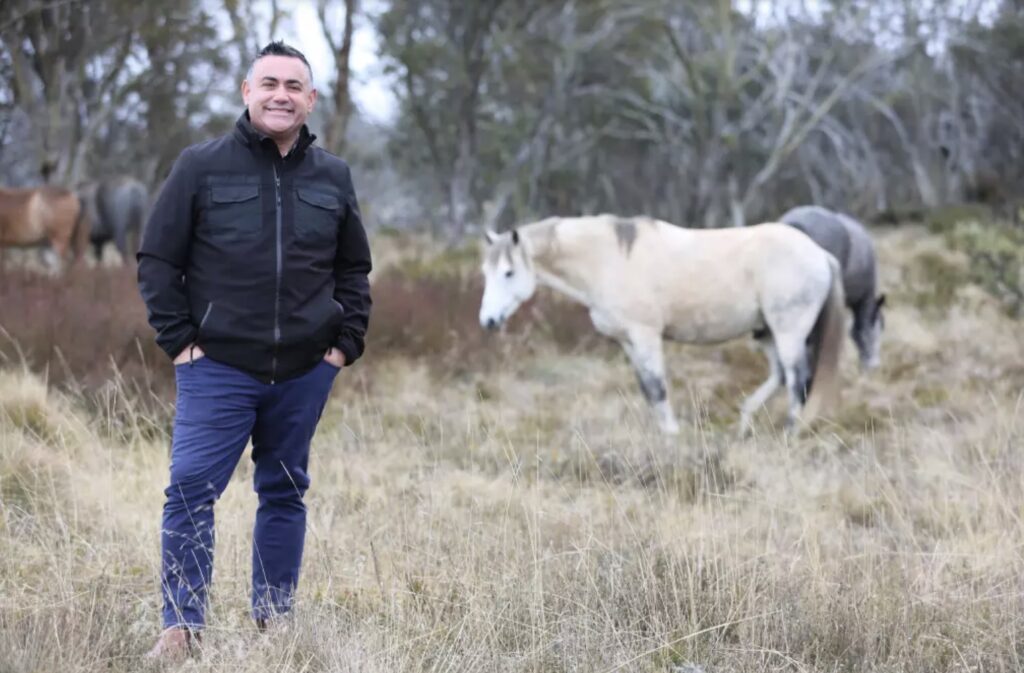
Barilaro’s “Brumby Bill”
While developing the draft Wild Horse Management Plan in 2016, NPWS wanted to reduce horse numbers to about 600. They wanted to do this by shooting. The biased public consultation process led to strident protests. The public overwhelmingly rejected their plans to shoot horses.
NPWS had to continue trapping and rehoming the wild horses rather than end the brumby’s life via a cruel journey to the knackery progressively over two decades, despite intense pressure from the horse haters to eradicate the brumby.
After intense lobbying by the Snowy Mountain community, the then Deputy Premier of New South Wales, John Barilaro, introduced the Kosciuszko Wild Horse Heritage Bill in May 2018, now known as the “Brumby Bill”. The purpose of the Bill was to recognise the heritage value of sustainable horse populations within certain parts of KNP and maintain that heritage through a wild horse management plan.
While Barilaro supported the reduction of brumbies to a more “sustainable” level, he strongly argued that NPWS would not use shooters:
“If numbers of wild horses are a problem in the Kosciuszko National Park, there are kinder ways to control the wild horse population”.
Opponents argued the Brumby Bill put the brumbies on a higher pedestal than the environment they were destroying. However, Barilaro’s actions overwhelmingly made him popular despite intense criticisms from the brumby haters. At the next state election in March 2019, he received a record swing, attaining the seat’s highest winning margin by winning every polling booth, a feat never achieved in the previously notorious marginal Monaro electorate. There was no doubt much of the local community supported his push to recognise the heritage value of the brumbies over culling all of them.
The new Bill compelled the environment minister to prepare a Wild Horse Heritage Plan using the advice of a Community Advisory Panel. However, the panel just focused on a horse removal plan and ignored any discussion on identifying the heritage value of the horse populations. It was deja vu as the management of brumbies was caught in a time warp going back to the Guy Fawkes mentality of simply shooting brumbies instead of considering alternative measures and controls.
Horse numbers
When NPWS prepared the Wild Horse Management Plan in 2016, the latest official horse count stated that 6,000 horses were in the park. NPWS wanted to immediately reduce numbers by half, with a view of eventually getting numbers down to 600 within two decades.
Estimating horse numbers in KNP goes back a long time. Up to 2009, numbers were based on “feasible estimates”. Consultant Dr Stuart Cairns started surveying brumby numbers in 2014 using “distance sampling”. It works by measuring the distance to clusters of animals during a run on a three-kilometre predetermined transect. Cairns then fed the figures into a software program the University of St Andrews developed to model detectability.
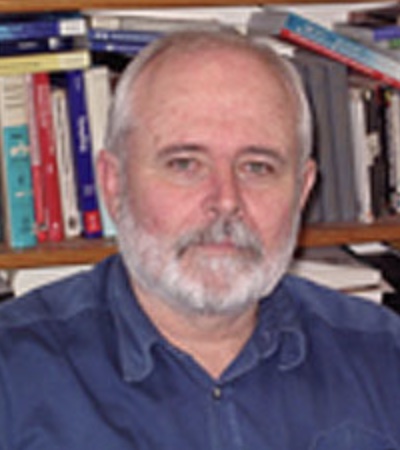
Cairns argues this is a step forward in accurately estimating population numbers because, in many strict transect sampling exercises, researchers always assumed that there was perfect detection, which there never was. For strict sampling, a correction factor had to be calculated to compensate for the lack of detection of all animals. With the distance sampling method, Cairns argues the model provides a much better probability of detecting the target animal on the transect line.
However, since Cairns began his survey work, the estimated numbers of brumbies have increased markedly. Curiously, Cairns came up with similar dramatic and sudden population increases using the same methodology on a kangaroo counts in South Australia, from 508 to 300,000.
The latest survey in 2023 estimated an overall population of 17,400 horses. Cairn’s estimate has a very wide confidence interval, suggesting that the numbers could be as low as 12,934 or as high as 22,536.
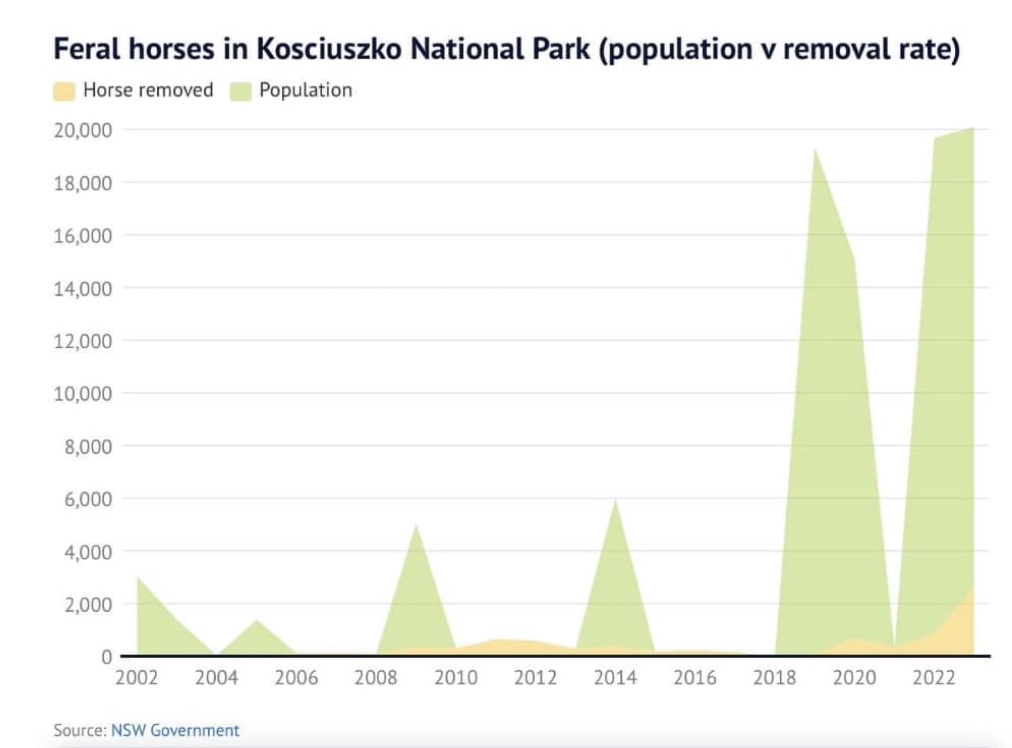
Equine scientist Joanne Canning and biostatistician Claire Galea hotly disputed his figures recently on the Ray Hadley Radio program. They argued that Cairn’s grouped numbers from different locations when they didn’t see the minimum 60 clusters of horses and then applied a global detection function. However, according to the University of St Andrews modellers, each location must have a minimum count of 60 clusters (two or more horses) before modelling can be carried out.
They believe there is sufficient evidence Cairns’ surveys have produced estimates that are massively inflated. For example, the annual spotting count by NPWS in 2020 detected 2,468 brumbies on the open plains of the northern block. Cairns estimate that year for the same area was 12,511, meaning that over 12,000 horses were in the trees when NPWS did their spotting count.
On the southern block, Cairns’ surveys between 2020-22, showed an annual increase as high as 95 per cent, which is biologically impossible.
After pressure from the Chair of the 2023-24 Inquiry, Emma Hurst and Independent MP Rod Roberts, Environment Minister Penny Sharpe organised NPWS to meet with Canning and Galea to discuss a different methodology to count horses. They proposed an annual head count not dissimilar to NPWS counts on the northern open plains where most of the brumbies live.
To ensure most of the horses were counted, but not double counted, they suggested flying two consecutive days. Those horses that were not on the plains on day one would for the most part be then present on the other day. A video and photos by a specialist wildlife photographer would be used to avoid double counting and check that all horses had been counted. This is called the mark-resight methodology. Then a statistical formula would be applied to estimate number of brumbies not seen.
NPWS didn’t take Canning and Galea seriously and arranged to continue using Cairns’ work.
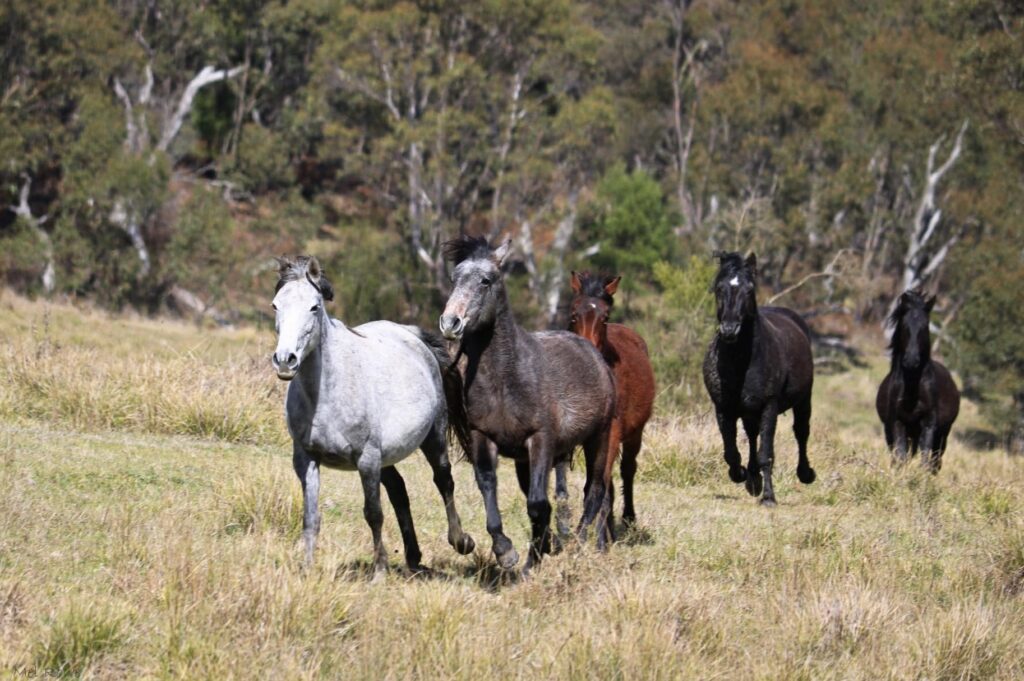
Galea told the 2023-24 inquiry that new and globally applied methodologies of population counting, by way of RGB imagery, the gold standard for capturing wildlife imagery, should be adopted using the annual headcount by the NPWS to replicate their work and get a better estimate of horse numbers.
Brumby lover Rocky Harvey worked with Galea to develop a different head count using Airborne Logic without needing NPWS permission. Relying on a GoFundMe campaign, their survey was limited by funds, but they managed to count every horse in their survey area. Thermal imaging can be used in vegetated areas, although it is expensive.
Their independent high-tech wild horse survey revealed one-tenth of the horses NPWS claim are in Kosciuszko National Park through Cairns’ work! Harvey says:
“This is not just a backyard report; this uses best-of-kind technology to capture and analyse high-resolution imagery that discovered horses the human eye couldn’t see.
Stack that up against the NPWS survey assumptions, and it’s pretty difficult to dispute.
The brumby lovers highlight the surveys that have almost been carried out annually in the Big Boggy area of KNP using the mark-recapture method from 2006-19. From 2012 to 2019, the annual population increase was approximately 5 per cent. According to the 2008 Wild Horse Management Plan, the expected population growth rate in KNP was 8 per cent.
Canning did her own calculations starting from 2005 using figures from a well-respected survey carried out only on KNP, applied an annual increase of 17 per cent and deducted annual official removals. She claims the feasible population estimate is closer to the spotting count results by NPWS rangers.
Cairn’s reported number increase of brumbies between 2014 and 2019 is 37 per cent, far exceeding the known maximum growth rate for wild horses. Because his report does not cater for natural annual removals, his figure is actually closer to 41 per cent. Fletcher has used an annual increase of 15 per cent in his analysis of horse numbers. Despite predicting unbelievable population growth, Cairns continues to carry out the same surveys.
The brumby lovers argue the unpublished annual spotting counts by rangers from NPWS in northern KNP, where most brumbies live, are much lower than Cairn’s estimates for the same area. The rangers fly to and hover over groups of brumbies and count them.
This is not surprising as the detection probability in Cairn’s survey was only 57 per cent flying in a helicopter 60 metres above the ground over the open plains. This contrasts markedly to similar surveys carried out in the USA using a light plane to achieve a detection probability of 85 per cent at similar heights with a clear view under good weather conditions. More importantly, they could detect horses seen up to 750 metres away covering the distance between transects.
The brumby lovers like the direct head count because they distrust any modelled calculation of unseen horses.
According to Canning and Galea, if the spotting counts were used as they suggest, it would mean greater accuracy. Up to 89 per cent of the wild horses have been reported as being in the Northern Block by Cairns, of those, 86 per cent were seen on the open plains.
They believe the Rangers know exactly where the horses are to count them. They can apparently see them accurately enough to shoot them, so why can’t they accurately count them?
NPWS and the government have maintained during the 2023-4 inquiry that they are very transparent. However, they refuse to publicly release their raw data, which they used to run the model to estimate between 12,000 and 23,000 wild horses are in the park. The brumby lovers argue that data would allow an independent assessment to extrapolate a more accurate figure.
Predictably, the brumby haters heavily criticised the Airborne Logic count carried out by Harvey.
Is it genuinely too difficult to get any independent and reliable count on the horse population in the park that we can all trust?
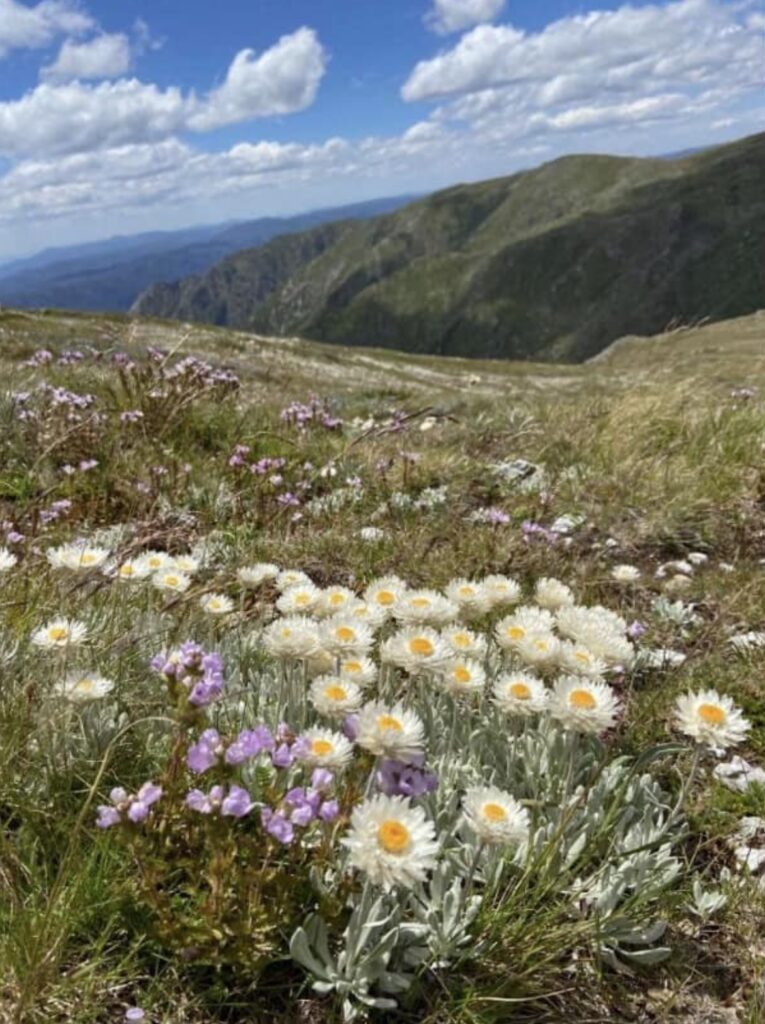
Do scientific studies prove brumbies are destructive in KNP?
It is no secret that NPWS has been itching for years to wipe out, or at least heavily cull, the brumbies in KNP. They believe strongly, aided and abetted by academics and the broader environmental movement, that horses must go.
Academics argue there is strong scientific evidence the wild horses damage the park’s “fragile” alpine and sub-alpine environment by trampling and grazing on the vegetation, eroding waterways and destroying critical habitats for threatened species such as the corroboree frog and the stocky galaxis fish. But how do they know that?
At a recent scientific conference, participants agreed that NPWS has no idea of the numbers of threatened species in KNP. It begs the question: How do they know species are declining, as ICS and Reclaim Kosci constantly claim?
As with other areas of scientific work, such as the Great Barrier Reef, problems are perceived when there is any visual change in the environment. Instead of hypothesising the problem, designing a study, collecting the data, and assessing and analysing the results to quantify and identify the impacts on threatened species, the convenient and most straightforward solution is to shoot the most visible animal and falsely argue the problem is solved.
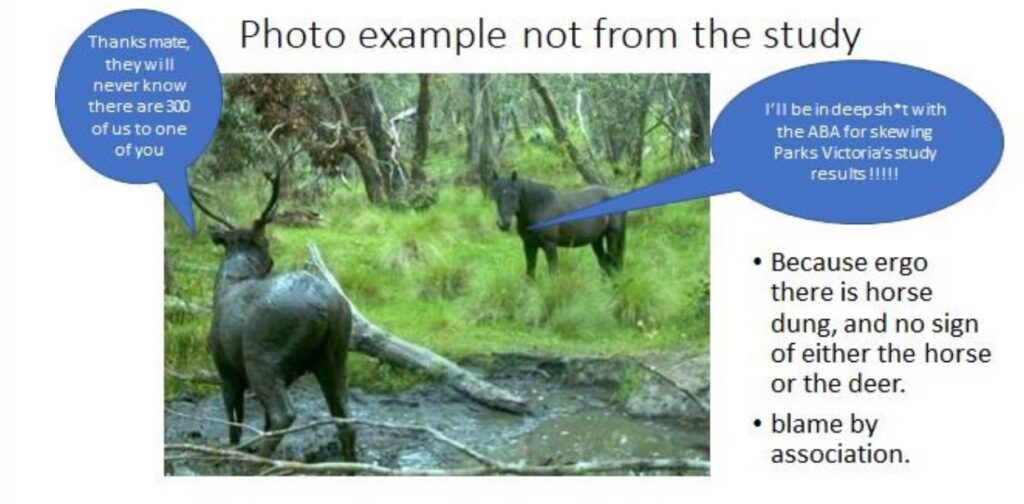
Brumbies take the blame for any destructive impacts seen in the park. Ecologists show dung piles and hoof prints as proof. Yet, they ignore the dung and prints of the other animals. Notwithstanding, deer prints look like horse prints in reverse, it was not surprising that a recent study by David Berman and colleagues in the Victorian part of the Australian Alps on the environmental impact of wild horses found it:
“extremely difficult to disentangle the stream bank impact attributable to deer, horses, or feral pigs given that they all drink, wallow, or cross streams in the same places.”
The government claims shooting programs manage the impacts of deer and pigs. However, there are nearly a million deer in the eastern Victorian Alps alone. The annual rate of increase in deer numbers is 55 per cent. Therefore, they must remove 550,000 a year to keep numbers stable, but nowhere near that number are shot each year.
Given that the main reason for re-introducing the controversial aerial culling of brumbies is predicated on their alleged environmental impact, it is surprising that research on brumbies in Australia is rare.
Until very recently, no published papers linked brumby density with environmental damage. Much of what we hear relies on correlating high horse numbers with damage seen in the park. However, controlled experimental studies are limited, and the ones carried out simply exaggerate the impacts of horses by excluding all other grazing herbivores.
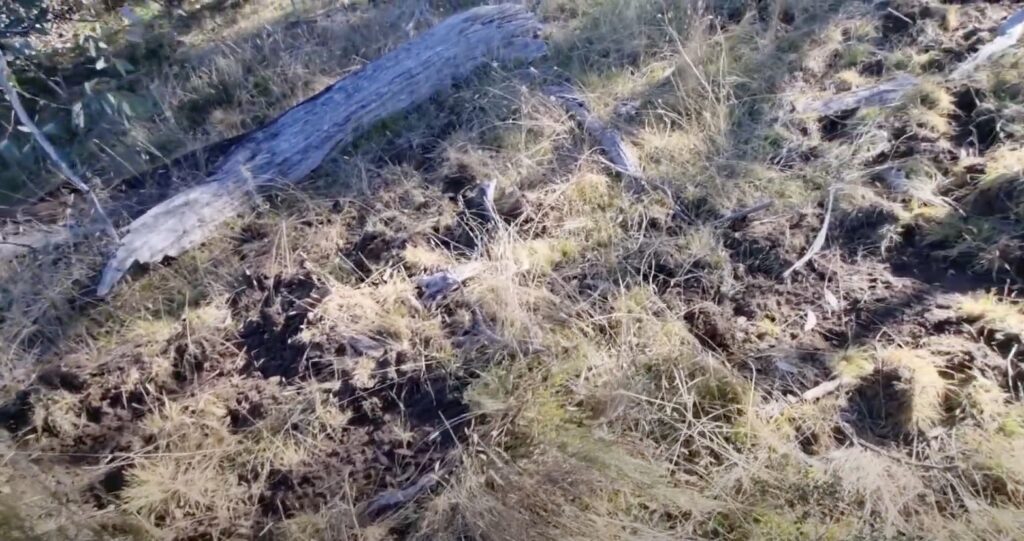
The NPWS created the Scientific Advisory Panel to provide scientific guidance for preparing the proposed new horse management plan. One of their recommendations stated:
“While horses at a high density can have significant negative impacts, the precise relationship between horse density and negative impacts specific to different areas in Kosciuszko National Park is not yet known. There may even be positive environmental impact of horses, at least where their densities are low”.
The panel highlighted limited studies that showed horse grazing in the Australian Alps maintained plant species diversity.
Anita Wild and Mark Poll prepared a report in 2012 on their brumby exclusion plot monitoring in the Eastern Alps region of Victoria. They acknowledged that most information about the perceived damage from horses is anecdotal, and there are limited studies quantifying their impact.
Berman et al found that in areas with populations of horses below nine per square kilometre, that is, 99 per cent of the Bogong High Plains and 82 per cent of the Eastern Victorian Alps, there were minimal environmental impacts. However, above that threshold, impacts increased exponentially.
It brings into question the need for an expensive aerial culling program using helicopters on an animal that many claim is the single cause of severe environmental damage in the KNP.
The case of the stocky galaxis highlights exquisitely the misguided and devious claims against the brumby. The native fish only occurs in two locations – a fish tank at Taronga Zoo and the Upper Tantangara Creek. It only survives where it does in the wild because introduced trout cannot breach a waterfall. Below the waterfall, the galaxis has been wiped out by a sanctioned feral fish that gorges on galaxis that the brumby haters say little about, too scared to take on the recreational fishing industry. But in their crusade to remove any links to our colonial past, they conveniently and erroneously blame the brumby instead.
Many environmentalists and ecologists who visit the national park immediately assume short grass, horse dung, and hoof prints prove that horses are responsible for all the impacts seen. The court case brought against Parks Victoria by the Australian Brumby Alliance in 2019, which sought an immediate stop to a brumby cull in the Alpine National Park, highlighted this problem. The cross-examination of Dr Arn Tolsma revealed that study plots labelled “deer-only damage” ended up as “horse-only damage”, showing a form of confirmation bias in the study.
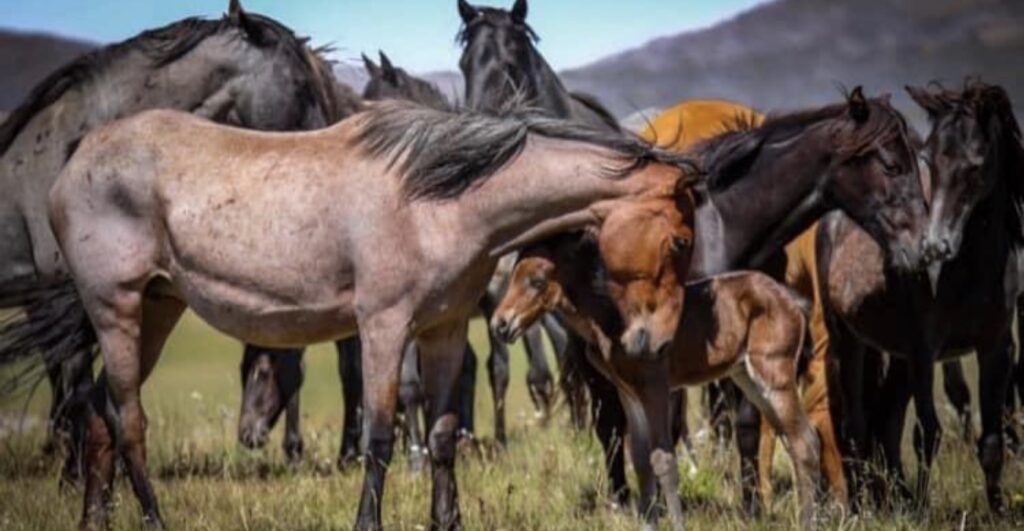
A sudden about turn – aerial culling gets the go-ahead.
When Penny Sharpe was in opposition as shadow environment minister, the government members questioned her care for the brumbies during a parliamentary debate for the Kosciuszko Wild Horse Heritage Bill 2018 (the “Brumby Bill”). She emphatically denied the Labor party would re-introduce aerial culling if elected at the March 2019 election because:
“Having spoken to other brumby advocates, we accept that there remains an ongoing issue about the count of numbers of horses in the park”.
Her colleague Adam Searle confirmed Labor’s stance:
“The party rules out the introduction of aerial culling in the future”.
Fellow Labor member Mick Veitch bellowed to the government members opposite him that it was offensive for anyone to suggest Labor has changed their position on aerial culling:
“The firefighters who go up in helicopters into Kosciuszko to do their work will tell you that there is serious updraft, and they cannot get a stable footing at all. So, if aerial shooting from a helicopter was attempted in Kosciuszko National Park the chances are that it would not work. It is just horrendous to even contemplate what would happen. Aerial shooting is not part of the population management program, and it should not be”.
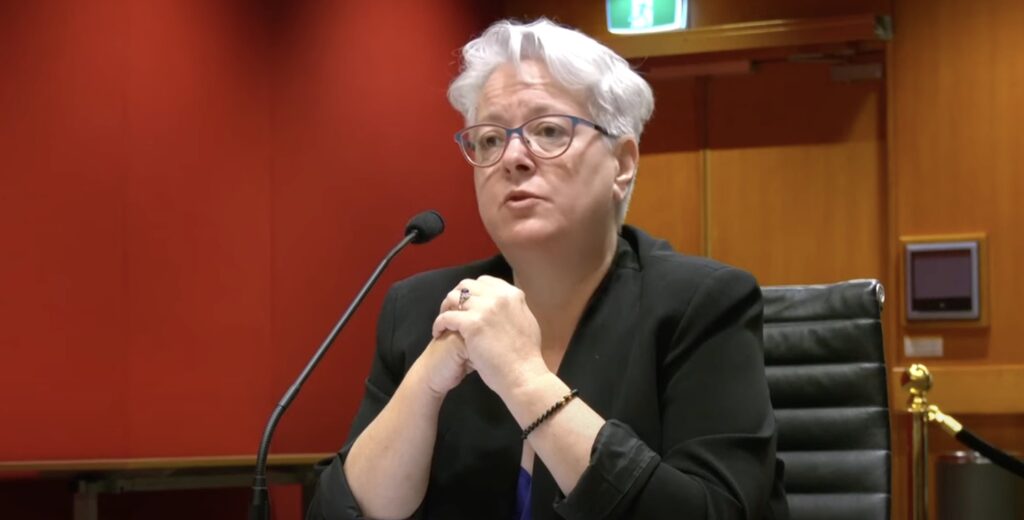
By 2020, however, the narrative around brumbies numbers and their alleged destruction in the park had ramped up dramatically and suddenly changed.
Led by the ISC, there was now:
“An environmental crisis in NSW national parks [after] two decades of failed horse control sparked by the controversial Guy Fawkes National Park feral horse cull 20 years ago”.
ICS argued that horse numbers had exploded, slowly replacing native wildlife. They ramped up the rhetoric, putting pressure on the government and NPWS to act:
“If you are not going to effectively control feral horses in national parks, you are better off handing the land back to the graziers”.
After nearly five years of doing nothing about brumbies in the park since parliament passed the Brumby Bill in 2018, the new Labor government announced plans to reduce brumby numbers to the Brumby Bill’s statutory figure of 3,000 by 30 June 2027. As part of a build-up to that exercise, NPWS released a wild horse management plan they had worked on for over five years and gave the public just 30 days to provide comments.
According to the management plan and groups such as Reclaim Kosci, horse numbers cannot be stabilised or contained without aerial shooting, mainly because they believe they are at the high end of estimates.
The brumby lovers argue that NPWS should adopt a range of techniques instead to keep numbers at 3,000 if necessary.
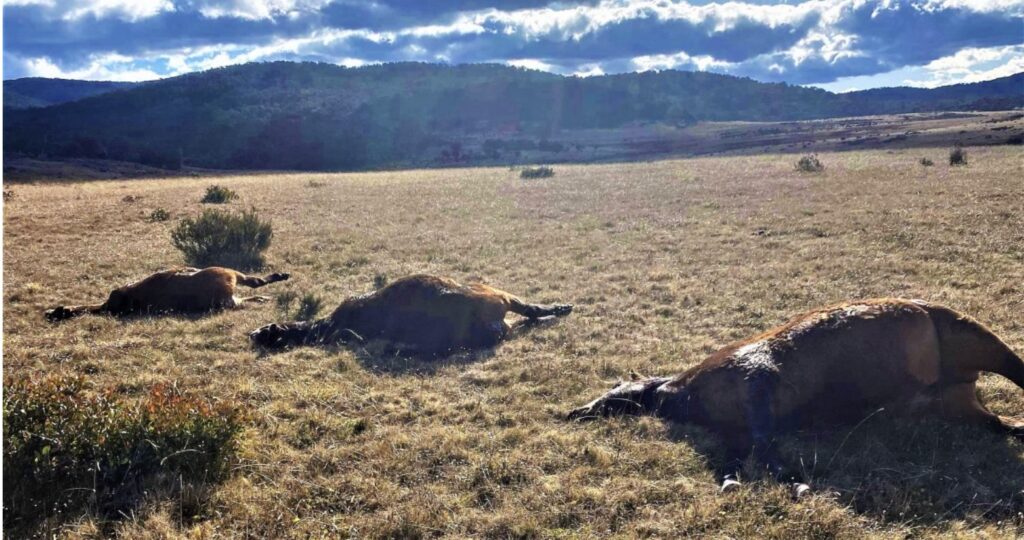
Sharpe is the current Environment Minister, and she gave the go-ahead for an aerial cull trial on 27 October 2023, six months into the job and a mere 11 days after the rushed public consultation process, citing 82 per cent of the 11,002 submissions supported aerial culling. However, the minister provided no prove of that claim when required to make the submissions public during the 2023-24 inquiry.
She argued that she had reviewed all the 11,000 submissions and read the departmental summary before proceeding with an aerial cull. Her capitulation on her 2018 promise is remarkable, but that’s politics in today’s world where overt lying and misleading parliament is common and rewarding as there are no consequences.
The aerial cull trial started over three days in November last year where NPWS claim 270 horses were shot using 2,032 bullets! Independent veterinarians were in a third helicopter and 43 horses were airlifted for an autopsy to confirm the brumbies were humanely killed. We don’t know the results of those autopsies, nor do we know if continued culling operations are still a trial or now the real thing.
The Snowy Mountains Bush Users Group commenced proceedings in the Supreme Court on 14 May 2024 seeking an injunction against the ongoing aerial culling of brumbies on KNP while the court considers their application to overturn the Minister’s decision to allow the culling, whether it is a trail or not.
It is extremely perplexing that the minister now bases her decision on a method she viewed with great skepticism while in opposition.
There is so much more to write about this issue that would add grist to the mill for a blockbuster screenplay to dramatically cover a conflict between important human heritage values versus the protection of the environment.
In my mind there are too many unanswered questions that need to be resolved before any aerial culling should continue.
For example, there needs to be a better understanding of the true numbers of brumbies in KNP. The fact that NPWS are not transparent over this issue and refuse to release the raw data makes the brumby lovers very suspicious of their true motives.
NPWS, environmental groups and some ecologists resent the strong link to the land the traditional bushmen and their families have over the area. There is also too much emphasis on trying to sever the legitimate cultural and colonial links the brumbies have to the area. Environmental destruction has been concocted as a way of achieving this.
The same people ignore the excessive environmental damage caused by pigs and deer in areas well hidden from the public eye. It is quite frankly too easy and lazy to target a large animal in much smaller numbers as a scapegoat just because it is easily seen during the day.
The most intriguing aspect I can’t reconcile in this saga is the need for highly trained and professional shooters having to pump, on average, 71/2 bullets into a fleeing and defenceless beast, including into its gut, and claim it is a humane way to cull an animal.
It only adds to the drama.
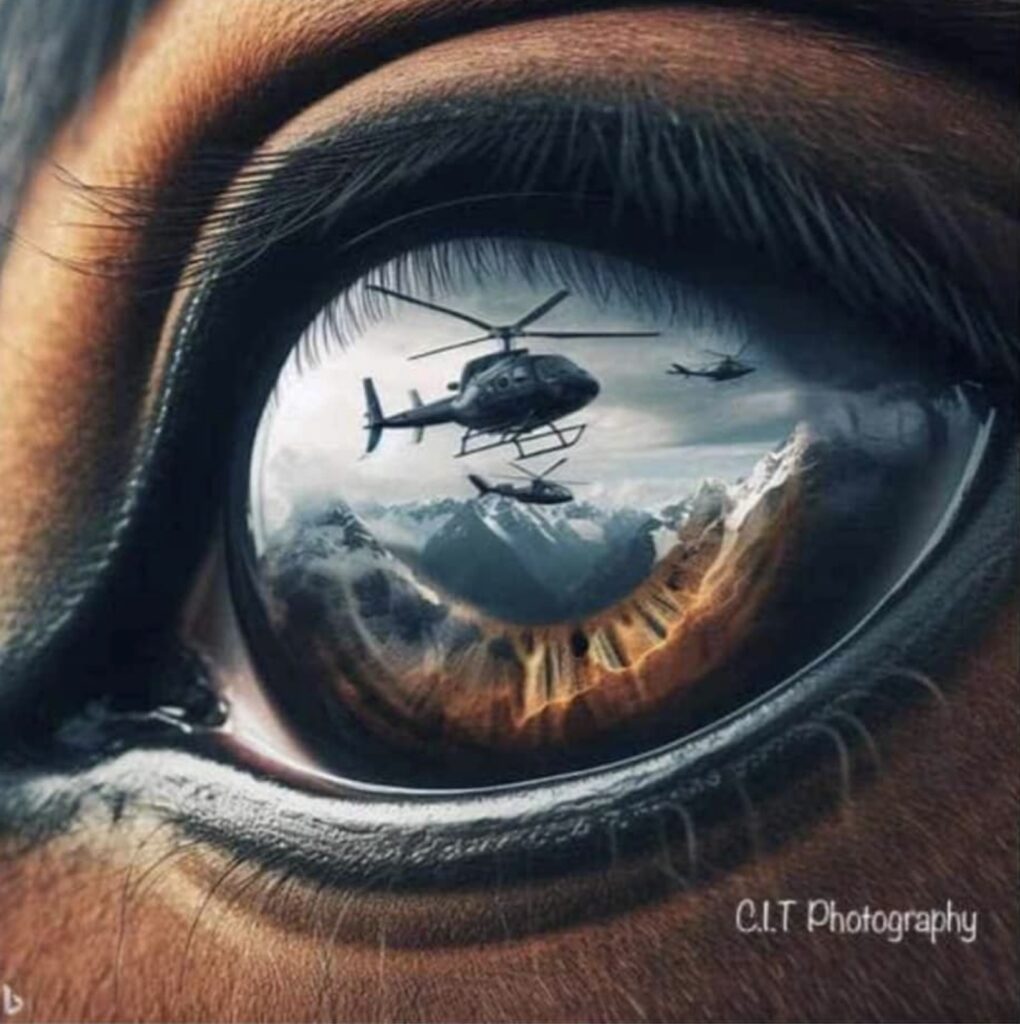
A completely clear, concise and correct account of the plight of our brumbies, and I thank you for it.
I hope this information finds its way to the general public as the mainstream media neglects to report this important issue.
Wow! It’s great to finally read some well researched media!
I feel you may have even read some of my own submissions.
Thank you for getting the truth out there!
Great article 👏
This is disgusting. How can a human being hurt any animal is beyond me.
How do any of them sleep at night?
The lying and chicanery involved in this whole debacle is mind blowing!!!!! This article clearly highlights the backstabbing and political turnarounds from both parties and various organisations! The message is clear from organisations and individuals alike – pre-colonial good; post colonial bad (to paraphrase “Animal Farm” – and we all know, or should know, the message that novel sends!)
That some of the brumby haters resort to the guttersnipe language they do is appallingly ignorant and perhaps reveals more about themselves than they realise. On the other hand, most of those who appeal for the brumbies are compassionate and avoid hate language (although unfortunately some are so incensed by the kind of vitriol levelled at them that they do fire up!) I exhort those who do to take the higher ground!!!!
The key to all of this is a much more accurate brumby count (which does not exist at the moment) and a thoroughly investigative study (with ALL stakeholders included) of the impact of ALL of the animals in the area, as well as the reality of the damage supposedly caused by the brumbies.
Why is no attention paid to the High Country men and women who know the area better than the ‘pencil pushers’ in the capital cities and those who have a vested interest in eliminating the brumbies? Blatant cruelty is never the answer!!!!!
Before I read this, I was extremely anti aerial culling of our heritage brumbies. I have read both sides, and it has enforced my belief that “if” brumbies are in biblical plague proportions, as the NPWS would have us believe, then there still has to be a more humane way of dealing with the problem.
Firstly a proper count has to be carried out, then a humane plan put in place if required.
People who care about the brumbies should have more input into how they should be controlled.
These politicians, environmental activists and scientists have absolutely no idea that culling the brumbies via aerial or ground shooting and leaving decomposing bodies with the toxins and bacteria all running into the pristine water ways will eventually destroy the whole ecosystem and whole surrounding environment. 🤬🤬🤬
So very true. Yet they are leaving dying horses and dead bodies throughout the park, as is evidenced by numerous photos. Wouldn’t you think that if they were serious about the biodiversity there, that the removal of these ‘post-colonial’ carcasses would be a priority?
Exactly
A friend of mine did her Forestry Degree many years ago, and studied the contents of the stomachs of mountain cattle.
She found NO EVIDENCE of native plants/wild-flowers in her many samples.
I would extend those findings to horses too because, as a horse owner, I know they are far more finicky with what they eat than cattle.
Also, they can get colic at the drop of a hat, eating anything other than grass, whereas cattle /sheep eat almost anything! I repeat – she foung no evidence of native plants in (mountain cattle) samples.
There is way to much evidence from the pro brumby side to dispute what we are being told by NPWS .. AVA .. ISC and Penny Sharpe. Until all this evidence is assessed all aerial culling should cease.
A great read thank you. I would like to also mention the amount of development and clearing of habit that’s happened and is planned for future for human endeavours such as ski fields, roller coaster, accommodation, Snowy 2.0, etc.
So vast that I believe that fact alone blows out of the water any valid argument that brumbies have any serious impact on the environment. Hypocrisy at its worst.
This is heartbreaking and evil and needs to stop! The aerial culling program is not backed up by legitimate scientific analysis of the actual numbers of brumbies in the area! This is all about Penny Sharpe and her ilk and the money to be made with the commercial development they plan in the park that will damage more of the environment than the horses could possibly do!
I’ve been saying for decades that the brumby saga would make a great series.
Don’t forget the Bogong brumbies in Victoria.
There’s a lot of ‘characters’ on all sides involved.
Thank you for your clear and concise article.
The level of deception being used by the parties involved is nothing less than Aggravated Criminal Animal Cruelty including the RSPCA.
🤬
On your bio page I read this ‘My goal in writing is to be accurate, authoritative, inspiring and entertaining’ but what I read here is nothing more than a regurgitation of falsehoods and propaganda you can read anywhere on the various feral horse supporters pages.
If you call yourself a historian then perhaps you should actually read up on the history instead of swallowing the human construct and false narrative that you have outlined.
The B.J. Paterson poem the horse supporters love to quote actually speaks of the problems the colonial farmers had with feral horses that would run off with their good stock and compete for good pasture. The farmers would run them down and slaughter them in the thousands just for their hide and hair. Later they made sport of the horses and chased them until they were spent but only took weanlings home to break and sell for some beer money. Paterson himself thought very little of the feral horse and commented so publicly regarding their suitability as Army remounts and later stated on radio they needed culling. The Bogong horses were rounded up annually and many were taken for the annual rodeo. That is where the term buck running came from. How were these bucking horses disposed of afterward?
The fact is the real colonial narrative that should be told is not the romantic version we hear so often from the horse advocates. The horses remaining today on public land are remnants of those unable to be mustered or simply left because they no longer had a value. Those breeding horses for remounts complained about the poor prices being paid by the government buyers and one of the most prolific horse breeders on the Bogong High Plains, Osborne Young, stopped breeding horses before WW1.
There is a documented history of the horses in Barmah forest and none are descended from any horses with connections to war. The horses were counted in the 1950’s and those found were branded with H. Adams trotting stables brand.
So why do people feel the need to change the narrative and take what the colonials called a pest and turn it into an icon? There are various reasons and it depends on which camp you sit in. Some are aggrieved because they lost their mountain grazing rights and see the feral horse as a symbol of resistance. Perhaps a middle finger salute to the authorities. Others see horses as their one true love in life. The reliable friend who always gave comfort. A magical animal that could do no wrong. There are some romantics who fell in love with the image of riding off on a horse with Tom Burlinson. And lastly there are those who see animals as sentient beings who deserve a place on earth regardless of how they got there. I actually feel these people have the most genuine argument but it is not one I share. It is the only one I respect.
Not much of what you wrote is accurate but something tells me that was not your intention. You have a reasonable writing style that could be described as entertaining in a fictional way but perhaps you should actually look into the history and say it in your own words instead of the rehashed rubbish.
Peter,
First and foremost, I would like to clarify that the correct name is AB Paterson, not BJ Paterson.
Furthermore, both the Bogong High Plains and the Barmah Forest are situated in the state of Victoria. The article pertains to the brumby cull in New South Wales (as stated in the heading), rather than Victoria, and it is imperative to maintain relevance to this specific subject matter.
While it is a fact that historically, approximately two centuries ago, brumbies were viewed as nuisances due to the absence of proper fencing to separate them from other horses and livestock, however perceptions surrounding these animals had certainly evolved, even a hundred years ago. Furthermore, many brumbies from the Snowy Mountains region were indeed utilized as remounts.
Today, these horses are often revered as iconic creatures in the Snowy Mountains even by the authorities themselves.
They have been identified formally to hold significant heritage value as evidenced in literature provided by governments’ own consultants and experts.
I am interested to learn of the inaccuracies you state are in the article, or maybe you have trouble confronting uncomfortable truths.
Thank you for a detailed and accurate account. It is mind boggling to be where we are when there is history and recent breakthroughs in research.
There is a clear lack of transparency from NPWS who has purchased contract science to meet an agenda. Also, there is the public’s dislike of their vile campaign against the brumby. The level of corruption is disgraceful.
So there had to be one anti-brumby joker there didn’t there?
What most of the responses don’t convey is the the millions of pigs, deer (cloven hoofed) susceptible to foot and mouth disease if it got into the country.
It would be a debacle of epic proportions! Horses are not cloven hoofed and are NOT in the numbers that the government and ISC would have us believe!
Lies and treachery by those that should do better, public servants are just that, but it seems that they should be known more for what they can be promised in the way of monetary bribes to look the other way, like RSPCA for example.
We need to do better than peppering and terrorising an animal (any animal) with 7-15 bullets from a helicopter. Clean kills are very few and far between! Our mental health is palpable 😤
I did make an error and thank you for the correction, but the first mention of Bogongs was not mine. The author mentioned it in relation to the flawed study conducted by Peter Berman and another commentor mentioned them before me but you did not take exception to that. It would appear it is not appropriate to comment unfavourably on this article.
The horses of the southern KNP have origins in Victoria and you would know that if you studied the history. I have asked the author to study the history instead of regurgitating the lies spewed out by people such as you. The O’Rourke’s took horses to the Limestone area near Suggan Buggan and they we deserted having never been mustered. Others escaped from Bindi Station. You cannot consider the horses in KNP and not consider those in the Eastern Alps of Vic. Again you should know that if you know your history.
My point is that people such as yourself have constructed your own fiction to suit your own agenda and have enlisted people such as the author to spread your propaganda. I hear stories of Sandy the war horse being bred on the Bogong High Plains but were is the proof. You ask me for proof but you cannot provide evidence for anything you ascertain. Sandy worked in a brick yard in Tallangatta and was donated by its owners. He never saw any war and did not get off the boat in a war area. These are the lies people like you propagate but you don’t have to dig far to expose the lies.
You are blind to the damage horses do. I agree deer and pigs do damage also but there is no objection to lethal control of these pests. I have been involved with horses for 50 years and love my horses dearly. I have two rescued TB’s and two others but they have no place running free in sensitive environments. You will never understand that. Your mind is blocked but maybe others will see the lies spread and not support you. There are plenty of horse owners out there who think the same.
Finally something is being done and I see little you can do to stop it. Good luck trying. Rehoming has done nothing. It is pretty obvious which of the categories you fall into.
Thank you for the article Robert.
To Peter,
Dear Sir.
While I respect your opinions. I believe the ongoing myths pertaining to the numbers that have been bandied about are definitely questionable. Where are your documents from the papers you cite? For one who writes so knowledgably there is no citation after your ‘facts’. Can you tell me why the Minister herself disputed Professor Cairns methodology and counting matrix when it came to counting the kangaroos stating that the numbers cannot possibly be that high and questioned the viability of his method. And yet, came forward stating that this very same method, by the same man was, and is, “the most up to date and accurate counting method in relation to the brumby numbers”?
The fact is that many areas of the KNP are far too mountainous and gullies too steep for the horses to traverse. However, as shown in the map regarding the safe zones, mountain areas etc the matrix has covered all areas and the count of horses in one area has just been multiplied by the area squares with the average published as being ‘the most accurate’.
Accurate counts do not work this way with the Cairns method being far more suitable for the original purpose that being for the Dartmoor and Welsh Moor ponies. Where is the notification that states “Do not use in heavily treed or hilly areas”. Have you actually been to the park?